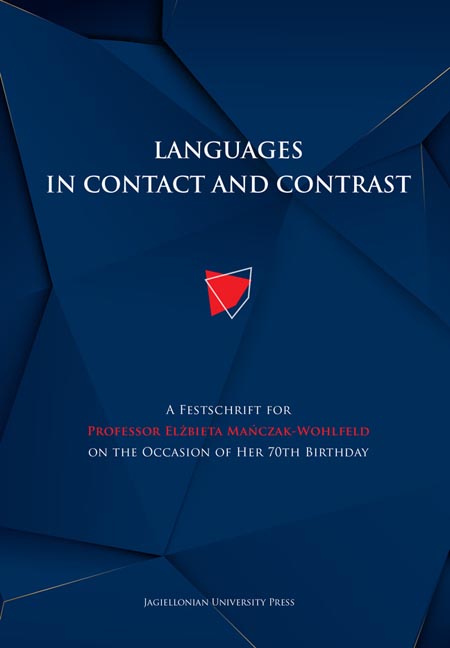 Languages in Contact and Contrast
Languages in Contact and Contrast Published online by Cambridge University Press: 14 October 2023
Introduction
Professor Elżbieta Mańczak-Wohlfeld has extensively and expertly studied English-Polish language contact contributing to a better understanding of cultural and linguistic changes occurring in Poland over the last decades. Whereas her studies analyse and document the English loanwords in Polish, this note discusses elements of Celtic origin present in contemporary Polish vocabulary. Section 2 of the paper briefly introduces the phenomenon of language contact, Section 3 lists the ancient Celtic elements which found their way into Polish (and numerous other modern languages), Section 4 presents the more recent borrowings from Irish, Scottish Gaelic, Welsh and Breton, and Section 5 mentions the most recent cases of possible direct borrowings.
Language contact and borrowings
The term language contact can refer to a process, state, result of the process, or the appropriate field of research. Probably the most concise definition of language contact understood as a process/state has been provided by Sarah G. Thomason: “Language contact is the use of more than one language in the same place at the same time” (Thomason 2001: 1). As the same author points out, “language contact is the norm, not the exception” (Thomason 2001: 10). It is necessary to remember that language contact is “really the contact of one community with another, and the effect that contact has on their respective language behavior” (Wheeler 2015: 76); furthermore, languages in contact “are, after all, the result of people in contact and of communities of people of different language backgrounds in contact” (Clyne 2003: 1), and:
“Contact” is, of course, a metaphor: language “systems” do not genuinely touch or even influence one another. The relevant locus of contact is the language processing apparatus of the individual multilingual speaker and the employment of this apparatus in communicative interaction. It is therefore the multilingual speaker’s interaction and the factors and motivations that shape it that deserve our attention in the study of language contact. (Matras 2009: 3)
However, for ease of exposition, the metaphorical form will be used throughout this paper.
To save this book to your Kindle, first ensure [email protected] is added to your Approved Personal Document E-mail List under your Personal Document Settings on the Manage Your Content and Devices page of your Amazon account. Then enter the ‘name’ part of your Kindle email address below. Find out more about saving to your Kindle.
Note you can select to save to either the @free.kindle.com or @kindle.com variations. ‘@free.kindle.com’ emails are free but can only be saved to your device when it is connected to wi-fi. ‘@kindle.com’ emails can be delivered even when you are not connected to wi-fi, but note that service fees apply.
Find out more about the Kindle Personal Document Service.
To save content items to your account, please confirm that you agree to abide by our usage policies. If this is the first time you use this feature, you will be asked to authorise Cambridge Core to connect with your account. Find out more about saving content to Dropbox.
To save content items to your account, please confirm that you agree to abide by our usage policies. If this is the first time you use this feature, you will be asked to authorise Cambridge Core to connect with your account. Find out more about saving content to Google Drive.